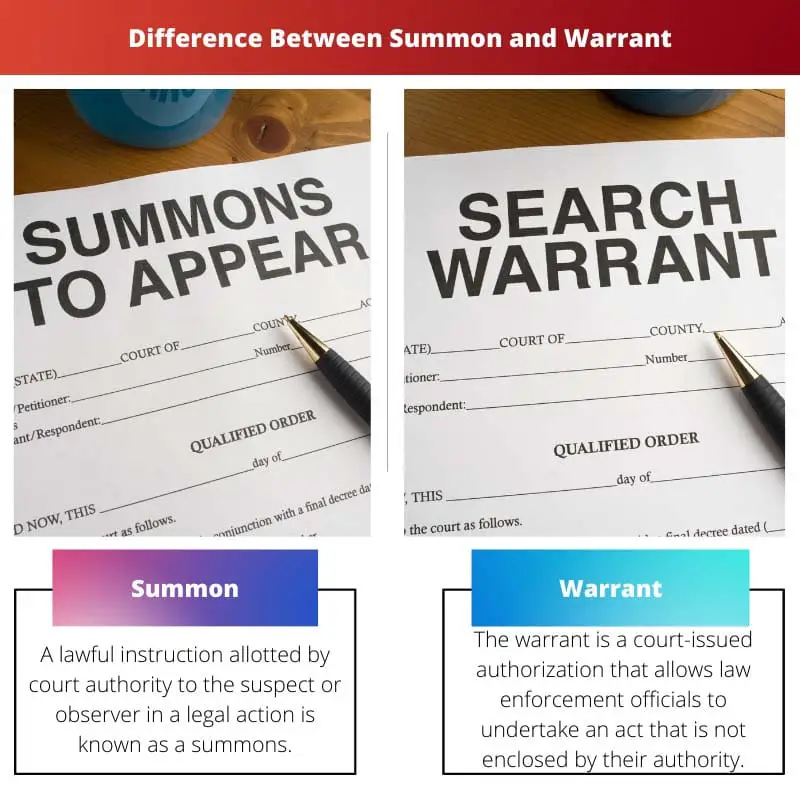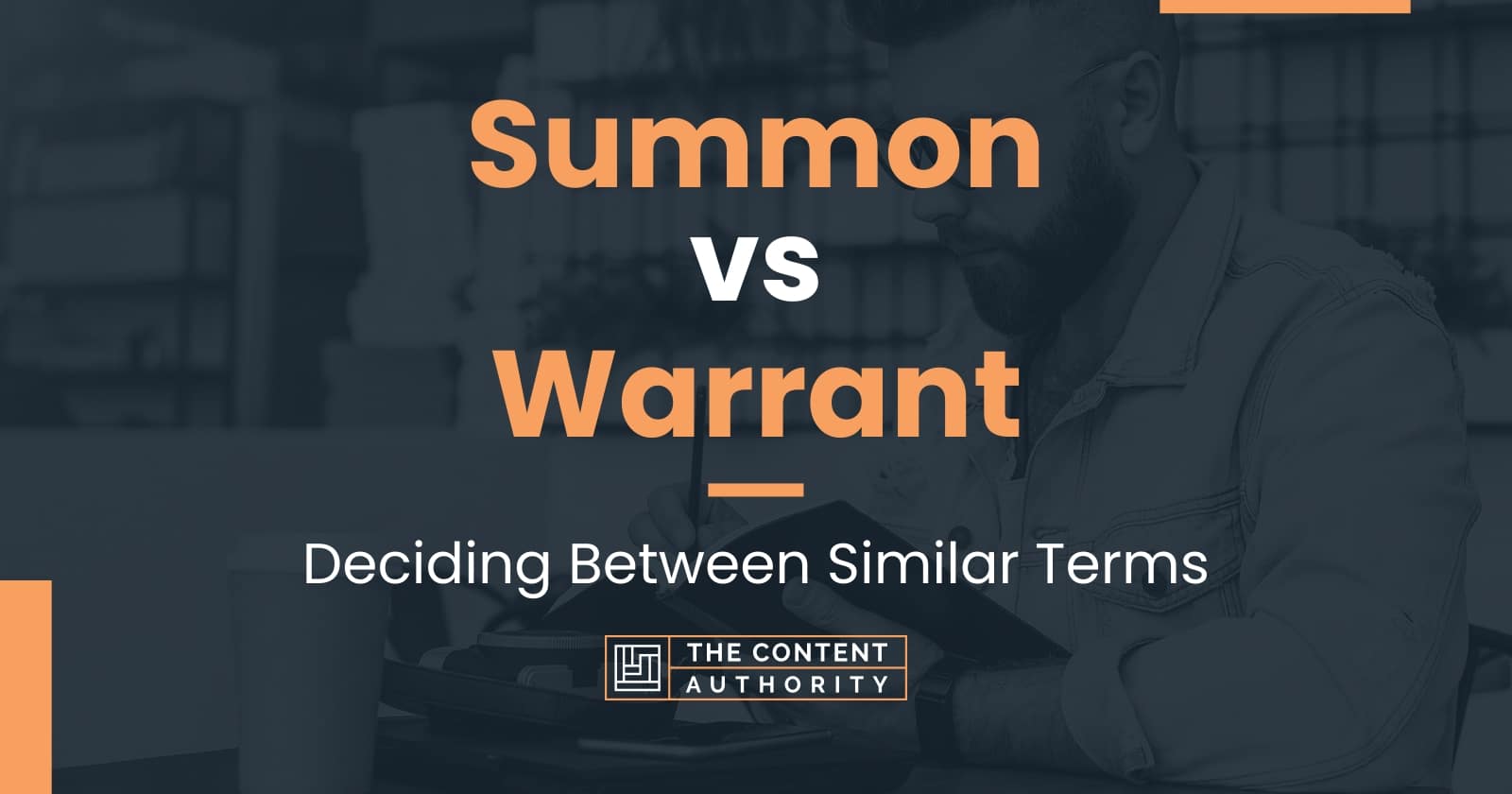Summons Vs Warrant - The warrant is issued by judges or magistrates, but the summons is issued by a court or government summons and warrants. A summon is a court order requiring a person to appear in court, while a warrant is a court order authorizing law. Both the processes are used by a court to compel the appearance of a person at court. Summons are an order to appear before a judge or magistrate.
Summons are an order to appear before a judge or magistrate. The warrant is issued by judges or magistrates, but the summons is issued by a court or government summons and warrants. A summon is a court order requiring a person to appear in court, while a warrant is a court order authorizing law. Both the processes are used by a court to compel the appearance of a person at court.
A summon is a court order requiring a person to appear in court, while a warrant is a court order authorizing law. The warrant is issued by judges or magistrates, but the summons is issued by a court or government summons and warrants. Both the processes are used by a court to compel the appearance of a person at court. Summons are an order to appear before a judge or magistrate.
Summons vs. Warrant Key Legal Differences Explained! 🚨📜 Difference
A summon is a court order requiring a person to appear in court, while a warrant is a court order authorizing law. Summons are an order to appear before a judge or magistrate. Both the processes are used by a court to compel the appearance of a person at court. The warrant is issued by judges or magistrates, but the.
Subpoena Meaning, Examples, Court, Vs Summons & Warrants
A summon is a court order requiring a person to appear in court, while a warrant is a court order authorizing law. Both the processes are used by a court to compel the appearance of a person at court. Summons are an order to appear before a judge or magistrate. The warrant is issued by judges or magistrates, but the.
Summons and Warrant The Difference Legal Up
Both the processes are used by a court to compel the appearance of a person at court. A summon is a court order requiring a person to appear in court, while a warrant is a court order authorizing law. The warrant is issued by judges or magistrates, but the summons is issued by a court or government summons and warrants..
Summon vs Warrant Difference and Comparison
A summon is a court order requiring a person to appear in court, while a warrant is a court order authorizing law. Both the processes are used by a court to compel the appearance of a person at court. Summons are an order to appear before a judge or magistrate. The warrant is issued by judges or magistrates, but the.
Summon vs Warrant Deciding Between Similar Terms
A summon is a court order requiring a person to appear in court, while a warrant is a court order authorizing law. Summons are an order to appear before a judge or magistrate. The warrant is issued by judges or magistrates, but the summons is issued by a court or government summons and warrants. Both the processes are used by.
Criminal Summons vs. Warrants for Arrest in NC SeiferFlatow, PLLC
Both the processes are used by a court to compel the appearance of a person at court. A summon is a court order requiring a person to appear in court, while a warrant is a court order authorizing law. The warrant is issued by judges or magistrates, but the summons is issued by a court or government summons and warrants..
Differences Between Summons and Warrants Cases PDF Summons Plea
A summon is a court order requiring a person to appear in court, while a warrant is a court order authorizing law. Summons are an order to appear before a judge or magistrate. The warrant is issued by judges or magistrates, but the summons is issued by a court or government summons and warrants. Both the processes are used by.
Summon vs Warrant Difference and Comparison
Both the processes are used by a court to compel the appearance of a person at court. A summon is a court order requiring a person to appear in court, while a warrant is a court order authorizing law. Summons are an order to appear before a judge or magistrate. The warrant is issued by judges or magistrates, but the.
What is the difference between a warrant and a summons?
The warrant is issued by judges or magistrates, but the summons is issued by a court or government summons and warrants. Summons are an order to appear before a judge or magistrate. Both the processes are used by a court to compel the appearance of a person at court. A summon is a court order requiring a person to appear.
Cognizable vs. Non Cognizable offenceSummons vs. WarrantCriminal
A summon is a court order requiring a person to appear in court, while a warrant is a court order authorizing law. The warrant is issued by judges or magistrates, but the summons is issued by a court or government summons and warrants. Both the processes are used by a court to compel the appearance of a person at court..
A Summon Is A Court Order Requiring A Person To Appear In Court, While A Warrant Is A Court Order Authorizing Law.
Summons are an order to appear before a judge or magistrate. The warrant is issued by judges or magistrates, but the summons is issued by a court or government summons and warrants. Both the processes are used by a court to compel the appearance of a person at court.









